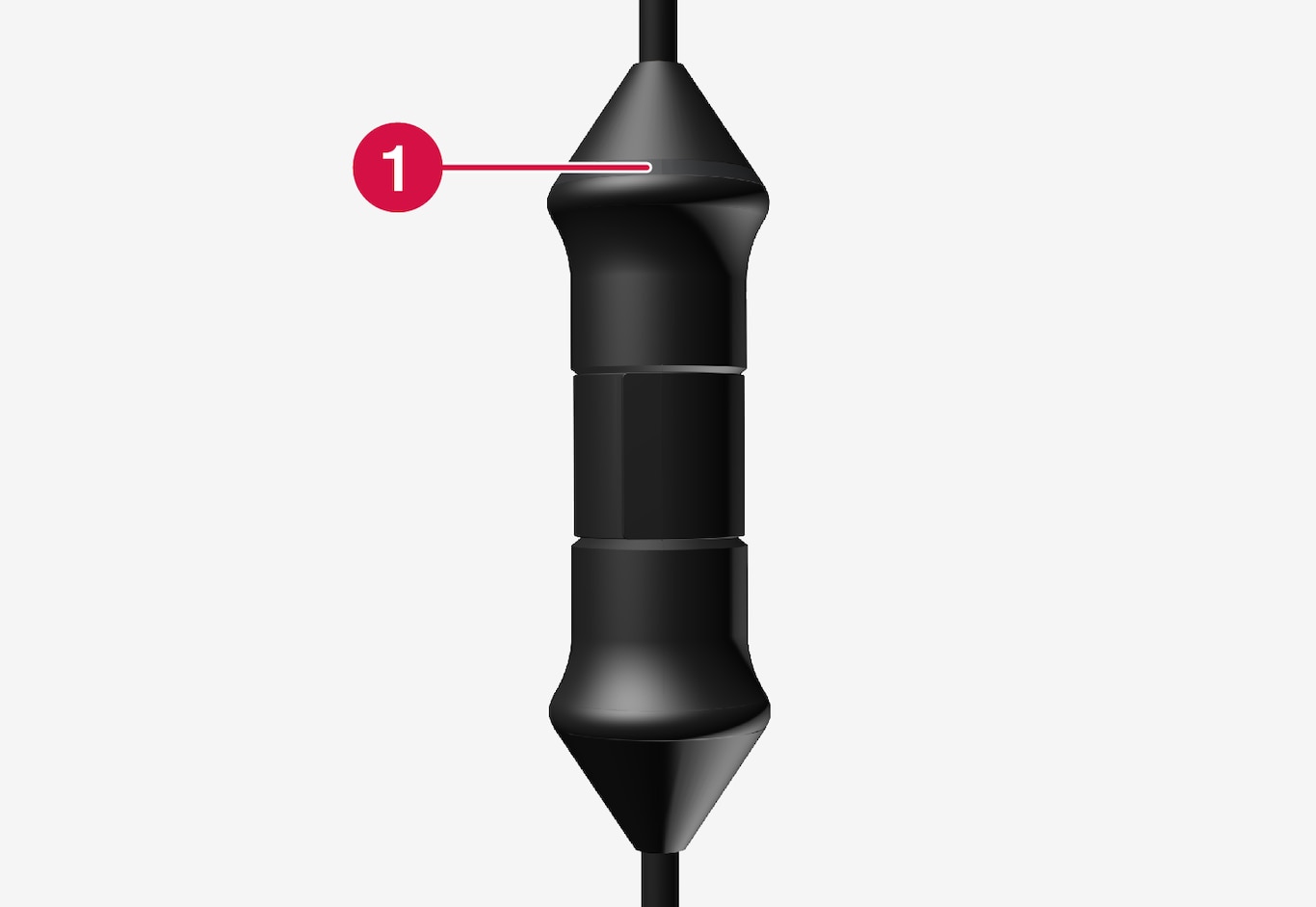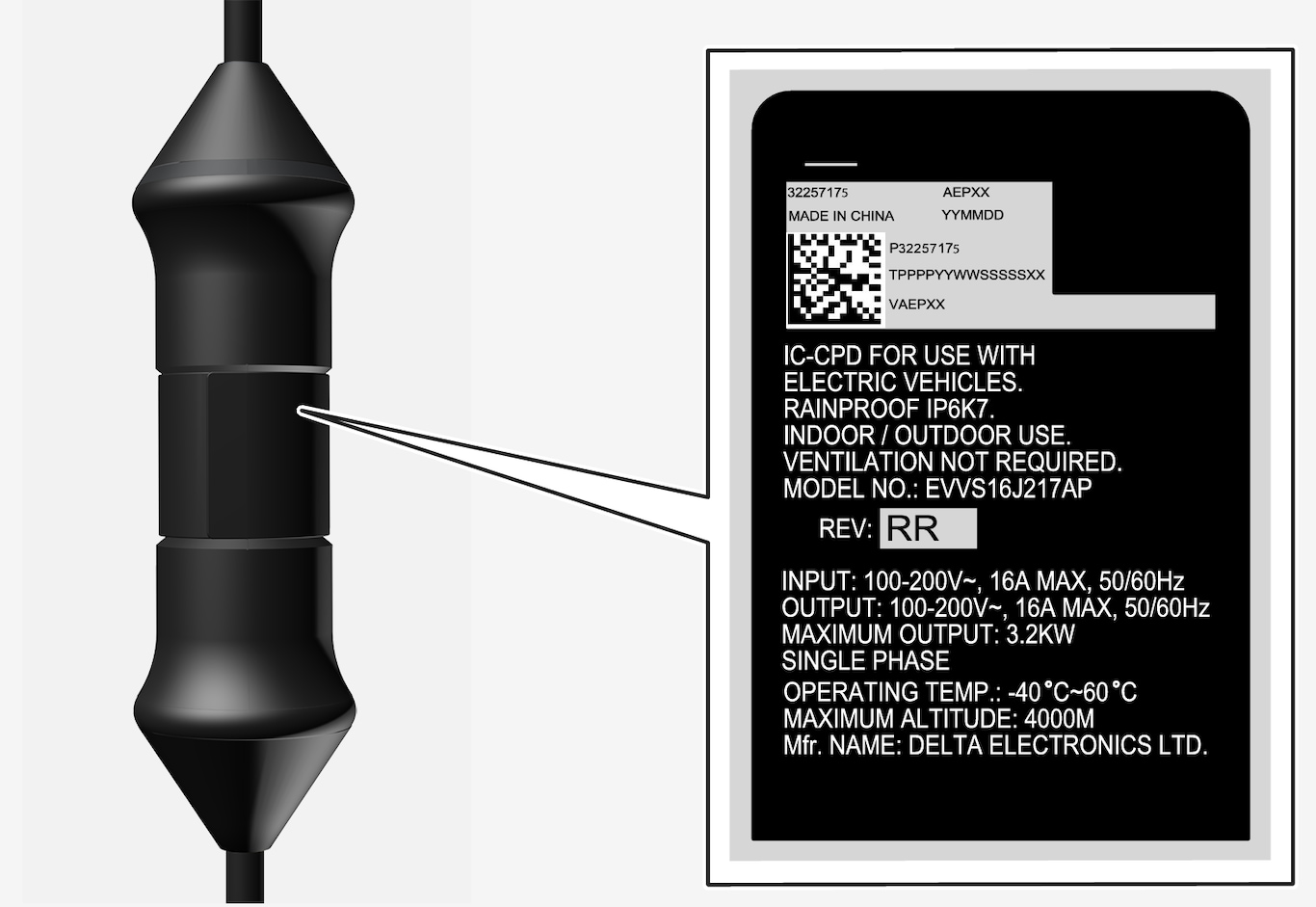Residual current device in charging cable
The charging cable has a circuit breaker that helps protect against current overloads and thermal overheating.
Warning
Charging the high-voltage battery may only be done from approved, grounded 120-/240 V outlets (AC, alternating current). If the electrical circuit or electrical socket's capacity is not known, let a licensed electrician inspect the electrical circuit's capacity. Using a charge level that exceeds the electrical circuit's or electrical outlet's capacity may start a fire or damage the electrical circuit.
Warning
- The charging cable's residual current breaker helps protect the vehicle's charging system but cannot ensure that an current overload will never occur.
- Never use visibly worn or damaged electrical outlets. Doing so could lead to fires or serious injury.
- Never connect the charging cable to an extension cord.
- Maintenance or replacement of the high-voltage battery may only be performed by a trained and qualified Volvo service technician.
- Do not use any charging cable other than the recommended one.
- Do not use an external timer between the charging cable and the electrical outlet.
- Do not use any adapters between the charging cable and the electrical outlet.

 LED indicator
LED indicator
If the charging cable's residual current device is triggered, the LED indicator will light up red. Have the outlet checked by a licensed electrician or try using another wall outlet.

Important
- Check the capacity of the socket.
- Other electronic equipment connected on the same fuse circuit must be disconnected if the total load is exceeded.
- Do not connect the charging cable if the socket is damaged.